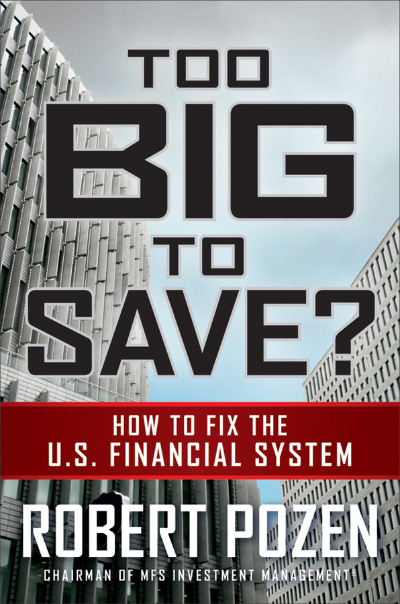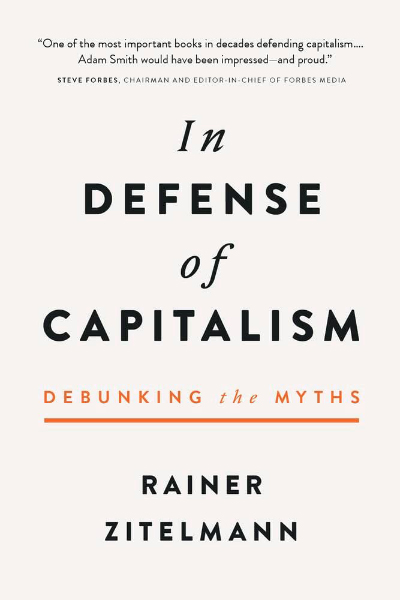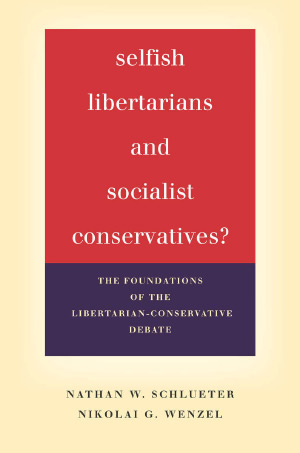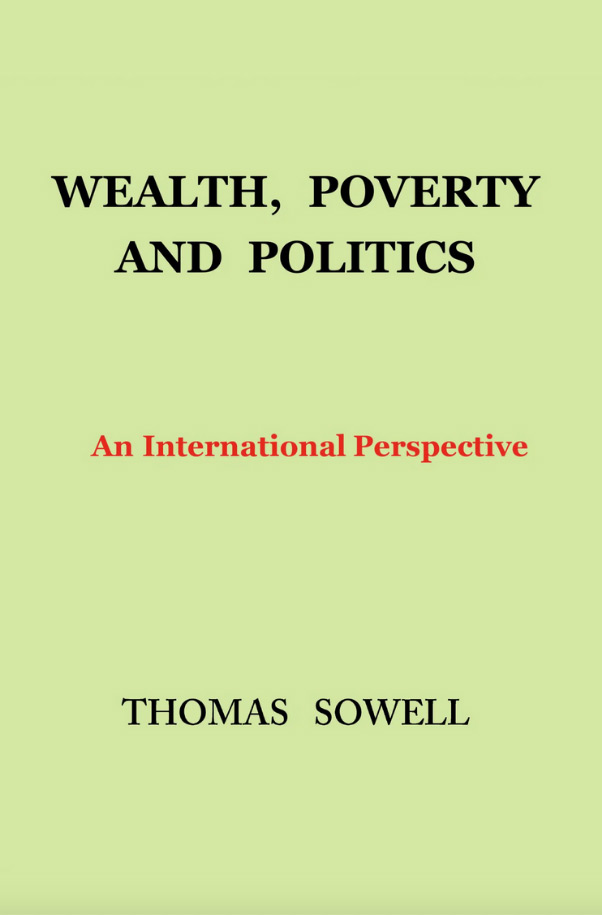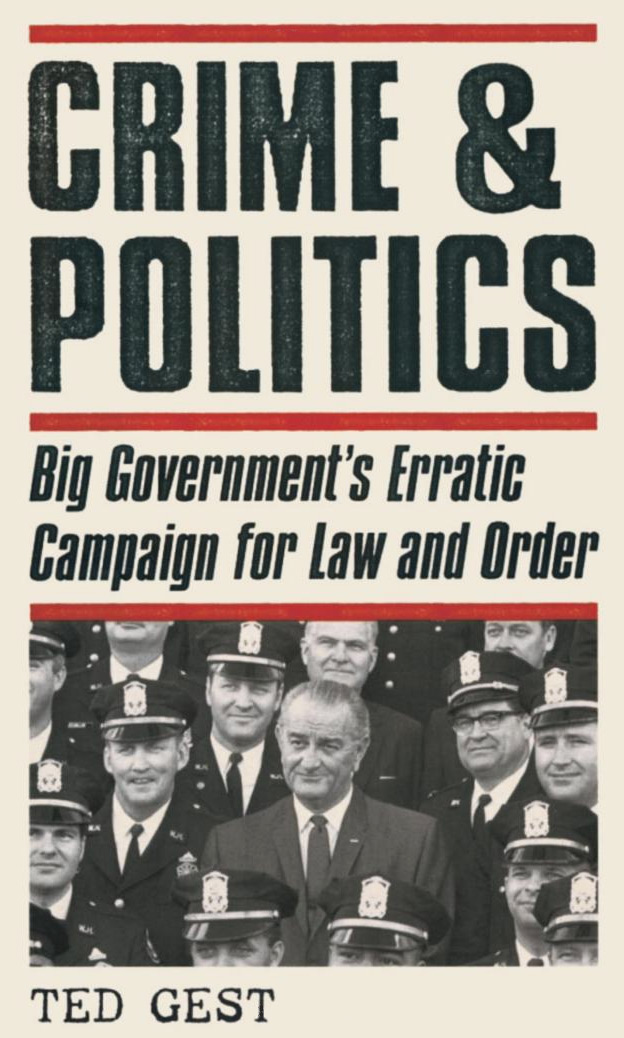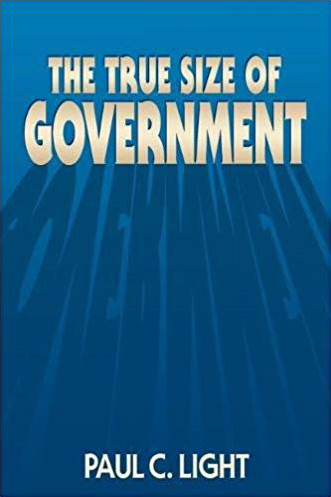The contents of Robert Pozen’s Too Big to Save? How to Fix the U.S. Financial System live up to its title; this book is above all a highly ambitious work. In nearly five hundred pages, Pozen compiles mountains of data and produces reams of analyses and recommendations meant to help policymakers and corporate chiefs “fix” a beleaguered global financial system. The book is clearly meant to be a practical guide more than a history or a case study, and coming from a senior lecturer at Harvard Business School and chairman of a $150 billion investment fund, it may well be read and applied by high-level decision makers in both government and private enterprise, neither of whom will be disappointed by the sheer volume of the author’s suggestions. However, Pozen identifies so many “causes” of the financial crises at so many levels of society, business, and government and develops so many solutions, some of which seem incompatible, that we may well doubt whether the book will achieve its lofty objective.
Pozen identifies several major causes of the financial crises, starting with unsustainably low interest rates, excessive debt, and too many stratified, impotent regulators of the financial system. He then touches on the incentive problems caused by 100 percent Federal Deposit Insurance Corporation (FDIC) guarantees, the issue of systemic risk generally, the need for more powerful corporate boards of directors, the need to reform loan securitization, the need to help “underwater” borrowers, overly liberal and unscrupulous financing of homes, lack of personal responsibility, foreign ownership of U.S. treasuries, antideficiency laws (which prevent many foreclosures in California and Arizona), the moral hazard caused by zero-down financing, and a lack of effective lender regulation. Charles Calomiris of Columbia Business School has said, “A financial crisis is one event with twenty explanations.” For Pozen, a financial crisis consists of dozens of events with hundreds of potential solutions.
Pozen admirably does not limit the scope of his book to the identification of problems; he proposes a solution for nearly all of them. If the FDIC insured 90 percent of deposits rather than 100 percent, depositors would perform more thorough checks on banks. Boards need “superdirectors” to act as watchdogs and to hold executives accountable. The Mortgage Reform and Anti-predatory Lending Act of 2009 is a step in the right direction. “Congress should create a new agency oriented toward consumer protection.” First-time buyers should receive tax credits rather than mortgages with no down payments. Pozen makes all of these recommendations and several others in the first twenty pages of the book, and the pace does not slow thereafter.
Chapter 2 deals almost exclusively with the “quasi-public institutions” Freddie Mac, Fannie Mae, and Ginnie Mae. What Pozen terms the “implicit guarantee” by the government to prevent their failure created moral hazard. All engaged in complex hedging, accounting misstatements, and huge accruals of debt. All were subsidized by the government, implicitly as well as explicitly. As they expanded aggressively, Pozen says, their public mission conflicted with the profit motive; the conflict eventually caused their stock prices to “plummet.” Then, as investors had expected, these institutions were bailed out. In light of the Freddie Mac and Fannie Mae failures, Pozen says that because “the country’s goals include the promotion of home ownership,” perhaps other private or public institutions should perform their roles. He then seems to contradict himself almost immediately, saying on the same page that “subsidizing certain mortgages . . . is best performed by one of these federal agencies” (here referring to the Department of Housing and Urban Development, the Federal Housing Administration, the Department of Veterans Affairs, and their assorted subagencies). Regardless of the legitimacy of Pozen’s idea that home ownership is a universal unwritten national aspiration, it seems odd that he equates this ideal with subsidization of housing.
Ratings agencies, Pozen says, also suffered from incentive problems. Because companies paid for ratings, a conflict of interest developed; part of the problem, he says, was that government opened the market to competition, allowing companies to “shop” for ratings for their sometimes highly risky securities. To prevent this shopping, “the SEC [Securities and Exchange Commission] or other public body” should choose which ratings agencies rate which companies.
In the ensuing chapters, Pozen writes at length and in considerable detail about problems with credit default swaps, executive compensation, the Troubled Asset Relief Program, the FDIC, the nature of asset bubbles and crashes, the need for globally integrated accounting standards, the need to deal with liquidity risk, problems with toxic assets, accounting issues such as fair market value and the uptick rule, the need to increase U.S. domestic saving, the needs to decrease the savings rate and to increase consumption of imports in China, the massive increase in the Federal Reserve’s balance sheet, and a litany of other macroeconomic concerns far too lengthy to be discussed here. For each one, Pozen proposes solutions that are mostly incremental and never revolutionary. Most of the time his recommendations involve new regulations that Congress or some agency should adopt to correct the failure of past regulations to the same end; he mentions numerous times the creation of entirely new agencies or huge changes in the duties of those that currently exist: for example, a “new Federal insurance agency,” “one federal regulator for the function of mortgage origination,” “one agency as the systemic risk monitor,” a new “consumer protection agency,” an agency to “regulate derivatives,” a global credit-default-swap clearinghouse, an agency to “regulate conglomerates,” and the broadening of SEC and Commodity Futures Trading Commission jurisdictions (he later suggests they be merged). Considering how many seemingly overlapping responsibilities Pozen wants to put in the purview of this new labyrinth of government agencies, it seems almost comical when, in a digression on bank regulation, he criticizes “duplicative bureaucracies.”
Pozen also has some ideas for private enterprise. He suggests several times that banks and companies with a high degree of connectivity to the financial system should adopt anticyclical measures, increasing capital reserves in good times so that they will be available in bad. He gives thoroughgoing advice on how executive compensation should be structured and how boards should function so that executives are made “more accountable.” He offers advice to China (increase consumption, do something about health care, lower savings); home buyers (beware easy credit, low down payments, and the temptation to deceive lenders); investors (beware public-private partnerships, remember that high return means high risk); and “nations” in general (they should form a “coalition of the willing” for accounting standards based on both rules and “general principles.”
No doubt Pozen is a brilliant businessman and a gifted lecturer, but he is clearly not an economist. His analysis is often clear, many of his points true, but his solutions are incrementalist at best, “big government” at worst, and sometimes contradictory. Though he does occasionally advocate free-market solutions, such as when he rails against tariffs, trade barriers, and protectionism in general, more often than not he sees market failure behind the financial crisis, as when he says: “Sooner or later a significant player in the CDS [credit-default-swap] market will fail and its failure will have adverse ripple effects on many firms.” A true free-market capitalist might ask, “So what?” In many turns of phrase, Pozen reveals a complete lack of public-choice-style skepticism, such as when he praises the FDIC’s “laudable” attempt to facilitate refinancing of bank debt or the Fed’s “noble effort to expand liquidity” by rapidly increasing the money supply.
In spite of the book’s length and the vast array of topics considered in it, Pozen leaves some glaring gaps in the story of the financial crisis and in the nature of his proposed solutions. For example, he mentions numerous occasions on which regulations had “unintended consequences,” forcing companies and government to act in maladaptive, inefficient ways. His solution, nearly without fail, involves introducing legislation or additional regulatory changes to fix these problems. After harshly criticizing many of the bailouts of the past years, he suggests that bailouts should be more broadly available to any institution sufficiently tied to the financial system as a whole to introduce “systemic risk.” He suggests that the federal government move from “exceptional assistance” to a “majority ownership model,” so that taxpayers are allowed upside returns as well as downside risk, avoiding what he terms “one-way capitalism.” He suggests homeowners should pay a maximum of 38 percent of their household income toward their mortgage if they are at least three months behind in payments (which is really an incentive to become three months late and perhaps to earn less money).
Most troubling of all to an academic is Pozen’s lack of a consistent economic-theoretical underpinning for his arguments. Early in the book (chapter 4), he even goes on at some length about the dangers of using “extrapolations of the past” because “the differences between the past and future trend lines are as important as the similarities.” If Pozen would be kind enough in his next book to produce those future trend lines, many economists would surely be grateful.
Furthermore, among the hundreds of sources in Pozen’s notes, one finds less than a dozen peer-reviewed academic papers. The vast majority of his sources are articles in newspapers and magazines, studies either by or commissioned by government agencies, speeches by politicians, and a host of financial Web sites (including www.investopedia.com). Though many business journalists, world leaders, and Web services no doubt provide insightful perspectives on the current financial crisis, biases and inaccuracies abound in this literature. Perhaps little useful material for a book of this scope on this topic is currently available in the peer-reviewed academic literature, a book written for the layman in any event, but Pozen fails to place his work in the context of any broadly accepted economic paradigm. His book offers mostly incremental “practical solutions” meant to fix the problems of a failed financial system by working almost entirely within that system. A consummate businessman, Pozen negotiates with the hydra on its own terms.
Pozen seems oftentimes completely unmoored from any economic school of thought: “Investor responses to financial asset prices seem to defy the normal laws of supply and demand,” he says. His evidence? Investors often buy when stocks go up in price; of course, investors are speculating on a continuing increase in demand and price from their original purchase price, which in no way defies any law of supply or demand. At times, he states the painfully obvious, such as when he says one should “identify any low-probability event that could put you out of business.” At other times, he makes blanket statements that seem at odds with his prescriptions: “broad-based legislative efforts tend to backfire.”
Pozen frustratingly never answers the question posed by his book’s title. One ultimately can infer only that, in his view, no institution is “too big to save.” For all of its many flaws, however, Pozen’s book is an informative work and a valiant attempt to unravel the mysteries of our tangled financial system. Furthermore, it is a laudable work simply for attempting to do what few other books in the genre do: offer tangible solutions. In the end, though, one hopes that policymakers rely on more authoritative sources than Pozen did in writing this book.


